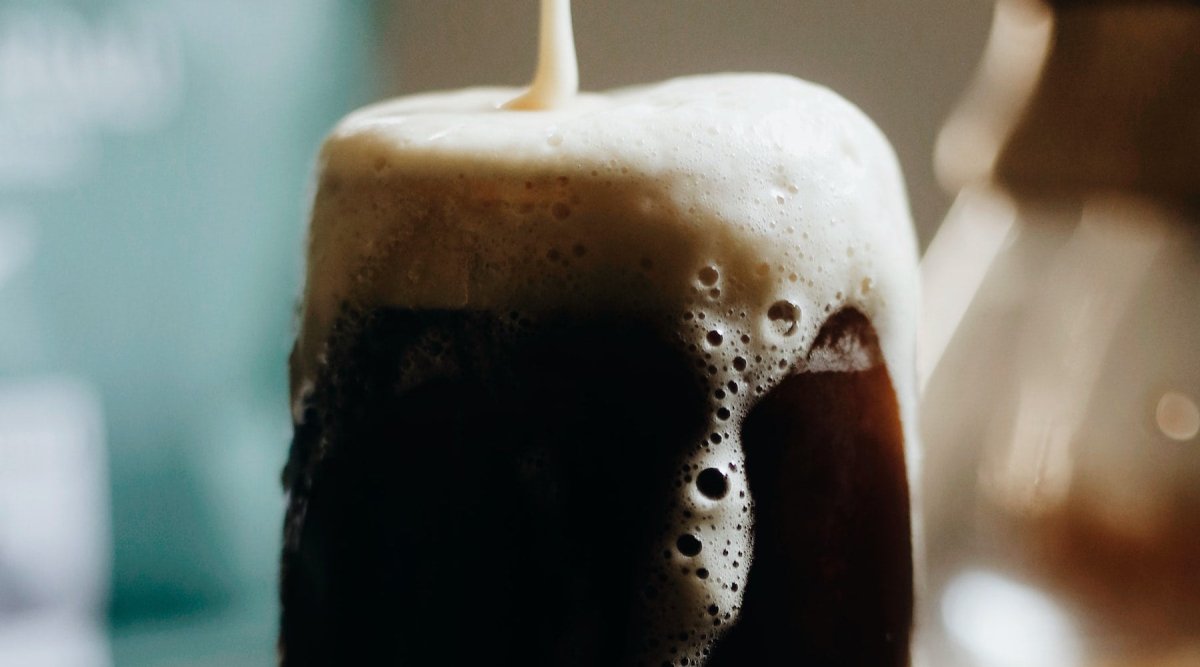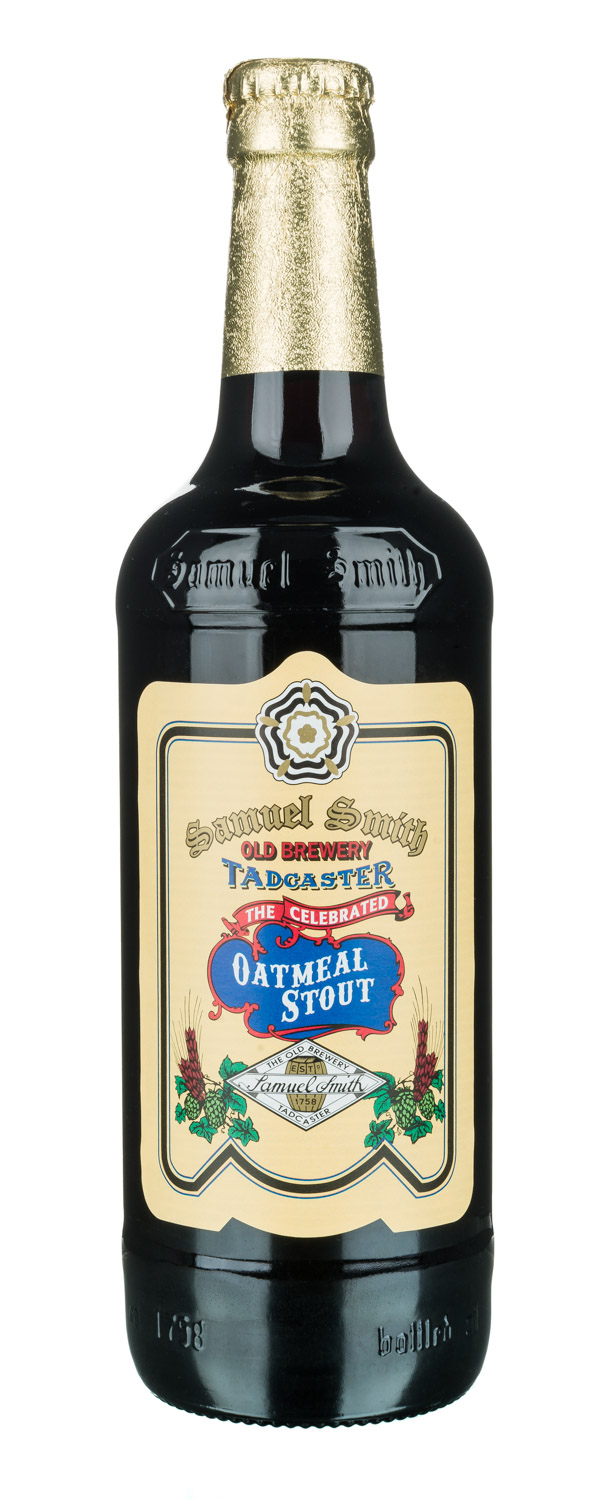Your cart is empty

Dark and Delicious: Stout 101
When most of us hear the word “stout”, chances are we can’t help but think of the thick, tasty black stuff. Whether a massive beer nerd or casual drinker, Guinness draught is likely the first thing that comes to mind.
The total world domination of Guinness Stout is a combination of marketing, palatability, consistency and a plethora of intangibles. Here at Sheep in Wolf’s Clothing, we aren’t snobbish about drinking big beer– as long as it’s made well! We also enjoy a pint of nitrogenated black velvet from time to time.
But stout is so much more than Guinness. The story of black ale goes back several centuries and has many twists and turns. Let’s dive deeper into the abyss and get to the bottom of your next pint.
What is Stout?
In simple terms, stout is a strong, dark, opaque beer. It is brewed with a top-fermenting yeast like any ale (and hence not a lager). It gains its characteristic colour from highly kilned and roasted malts such as chocolate malt, black patent malt, and roasted barley. These malts add much more than colour–flavours and aromas like well-done toast, chocolate, and espresso.
If we are going to discuss stout, we would be amiss without first mentioning porter.
Porters and Stouts
Before the advent of pale malting technologies, most beer would have been an amber to brown colour. The darkest of these beers, porter, would emerge in England during the early 18th century. Brewed exclusively with brown malt, and heavily hopped, these event horizons in a glass quickly became the top choice for the working class Londoners.
A large segment of the London working class at the time made their living as bearers, also known as porters. These bearers would carry cargo and supplies all over the city daily–they were the heart of London.
After a day of back-breaking work, these porters would settle in their local watering holes for a couple of pints of the black stuff. It was only a matter of time before these new ales were referred to as porter.

1840s advert for Guinness Dublin Porter
Soon, porter ale was being exported globally, including to the port of San Francisco. At the time, porters came in many strengths, the strongest of which was called stout porter.
The Etymology of the Word Stout
Now we know where the word porter comes from concerning beer. But what about stout?
Early usage of the English adjective stout meant proud or brave. But by the time porter started rolling around, the word stout had evolved to mean strong. This meant any type of beer could be described as a stout: stout pales, stout bitters, stout IPAs.
Confused yet? With the rapid rise in popularity of stout porter beer, stout would simply become a reference to the big inky beers of the British Isles.
Other adjectives used to describe stronger porters included “extra” and “double”. A few modern breweries have tried to make the term “double stout” stick–essentially a “stout stout”!
Types of Stout
Historically, strong porters or stouts have been all over the map. But today, modern brewers have ramped up experimentalism.
Let’s examine the main types of stout.
Dry Stout
The dry stout is also known as the Irish stout. Today, the most popular example of a dry stout is Guinness Draught. True to its namesake, these stouts avoid the medium to sickly sweetness that is found in many porters and stouts.
Instead, they used a moderate amount of hops and roasted grain character to leave the drinker with a pleasing bitter finish. It’s the characteristic dryness that makes these beers so damn drinkable in the eyes of many. It’s not all dry though - on the palate, the drinker is greeted with moderate cocoa and chocolate notes.
Oatmeal Stout
In northern Europe, up until the 16th century, nearly 100% “oat beers” weren’t uncommon. Oat beers would lose popularity due to their astringent and bitter character. A few centuries later, oatmeal stout was quite the novelty with a grain bill of up to 30% oats.
Early British examples such as Maclay of Alloa produced an Original Oatmalt Stout that used 70%. More typically, “oatmeal stout” was a marketing term. This meant breweries would add 0.5% oats to the grain bill purely to slap the words on the package. It is highly doubtful that such a small amount of oats added anything to the beer.

Samuel Smith's Oatmeal stout has become a modern classic
The modern evolution of the oatmeal stout involved 5-10% oats. These stouts are sweeter than their dry counterparts but balanced with a moderate amount of bitterness. They are typically full-bodied with notes of coffee and roasted nuts.
Today oats are used heavily in many of the most popular modern pales and New England IPAs but you can find classics like Samuel Smith’s Oatmeal Stout kicking about.
Sweet Stout
Ramping up the residual sugar character (sugars not metabolised by the yeast during fermentation) brings us to the sweet stouts. These black beers are also known as “milk” or “cream” stouts.
If you haven’t already guessed, the term “milk stout” refers to the use of lactose in beer. Brewers can add this milk sugar to the boil to enhance sweetness. Our little microorganism friends simply cannot metabolise lactose.
Lactose is roughly one-fifth to two-fifths the sweetness of table sugar (sucrose). This gives brewers some room for error–a deft hand is still needed! Oversweetened stouts will prove difficult even for the biggest sweet tooths out there.
Some sweet stouts contain no lactose and rather just finish fermentation with a high gravity. These grain sugars are the result of caramelised and crystal malts. Sweet stouts usually taste of treacle, espresso, and chocolate.
Imperial Stout
Imperial stout was birthed in the 18th century by a London brewery for export to Russia. These “Russian” imperial stouts maintained longevity of nearly two hundred years. Analysis of the later recipes shows an alcohol content of around 10% ABV with original gravity of 1.100 or higher!
But these beers weren’t sweet. History also shows that they were hopped at a rate of 28 g/l. For perspective, modern juicy IPAs will typically fall between 8-20 g/l. In other words, that’s a hell of a lot of hops!
Much like the original IPA, a high amount of hops was used as a preservative for the long journey of these exported imperial stouts.
Today, craft breweries make all sorts of strong, roasty, and bitter imperial stouts. Many of these are now called Russian Imperial Stouts. Goose Island began ageing imperial stout in Bourbon barrels and the rest is history! Today, imperial stouts are aged in all kinds of barrels including ex-wine casks.
American Stout
As you might have guessed, the American stout is a relative newcomer to the stout family. Like most things in US beer, the main differentiator is a heavy dose of hops. Typically, these stouts fall into the drier side and weigh in around 5-7% ABV.
Whereas sweet and oatmeal stouts will have an IBU count in the range of 20-40, American stouts will easily fall within a range of 35-70 IBUs. It’s not always the case, but oftentimes these stouts from across the pond will have a low to moderate amount of dry hopping.
The end result is a refreshing stout that balances dryness and roasted bitterness with notes of citrus, chocolate and pine.
Pastry Stout
As we continue down the evolution of the stout, we are brought to a category where rules seemingly cease to exist, the pastry stout. Why are they called pastry stouts? Good question. As an American, Kendon thinks the name is rooted in the ever-popular and extremely unhealthy breakfast item, the Poptart.
Pop Tarts come in a range of flavours from chocolate s’more to strawberry vanilla to red velvet cupcake. Honestly, that range of flavours just about sums up the pastry stout.

All kidding aside, pastry stouts can vary widely in original gravity and ABV but they usually gravitate towards the 8-12% range if not higher. Most beers are well situated in the Reinheitsgebot–malt, hops, water, and yeasts.
But upon entering the universe of the pastry, be prepared for both natural and artificial flavourings to pepper the landscape. Early pastry stouts feature adjuncts like cocoa nibs, coffee, lactoses and vanilla pods. Now get ready for blueberry pancakes, key lime pie, and roasted marshmallows!
Pastry stouts are surely the dessert wines of the beer world, but don't let the outward decadence fool you- the ideal pastry stout is surprisingly well-balanced. One way brewers can achieve this balance, is by barrel-ageing pastry stouts, adding complexity to these rich, luxurious flavours.
Wee But Stout
Our aim at SiWC is to brew beers that are bold and flavourful, regardless of ABV. To date, we've accomplished that with mostly lighter styles. But the added challenge of brewing a complex, full-bodied, low-alcohol stout - a style that's very name entails strength??? That's too good to pass up.
This winter will be the season of the “anti-imperial” stout. Be sure to watch this space in the coming months!
In the meantime, we've already taken our first step to the dark side...
WHISKY BARREL AGED BLACK LAGER
After some wild experimenting we made our first truly dark beer - a black lager aged in Scottish Whisky Barrels. The end result? Our Whisky Barrel Aged Black Lager - a sticky, dark brown brew full of coffee, chocolate, and spices. A shockingly crisp, refreshing lager with a woody, whisky sour finish... at 2.8% ABV!
Act quick. Whisky Barrel is a limited edition beer, so when it’s gone, it’s gone. Get your hands on a can at our online store today!
- Choosing a selection results in a full page refresh.


